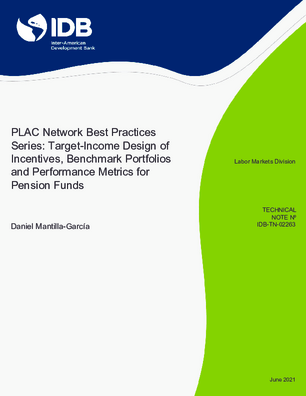PLAC Network Best Practices Series: Target-Income Design of Incentives, Benchmark Portfolios and Performance Metrics for Pension Funds
Date
Jun 2021
In defined contribution systems, at the end of the accumulation phase the assets in the retirement account are exchanged for a pension. The conversion rate from assets to retirement income (which depends on the level of interest rates) is very volatile, and its variations constitute the main investment risk facing pension fund affiliates. In this sense, performance metrics, management fees and benchmark portfolios that focus on assets (and asset returns) and ignore the variations in the conversion rate, embed several problems: i. they send wrong signals to regulators, fund managers and workers, ii. they provide wrong incentives to pension fund management companies, and iii. they leave pension fund affiliates exposed to their largest risk factor, even during the last few years preceding their retirement date. We find that regulatory incentives with these fundamental problems are ubiquitous in the region. The document presents a series of best practices, and delivers a practical set of tools to assist regulators and supervisors in designing a framework that improves security and sufficiency of retirement income, and provides relevant and timely information to pension fund affiliates. The framework achieves that by fostering an integration of the accumulation and the payout phases, and an alignment of the regulatory incentives for pension fund management companies with the retirement income objectives of pension fund affiliates. Using historical data from Colombia as a case study, the document illustrates and quantifies the improvements in terms of pension benefits and retirement income security that the proposed framework could bring.




